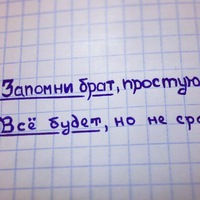
Что русский язык — один из богатейших языков в мире, в этом нет никакого сомнения. Объяснить
постановку знаков препинания и указать части речи 0
0
 0
0
Ответы на вопрос
 Внимание! Ответы на вопросы дают живые люди. Они могут содержать ошибочную информацию, заблуждения, а также ответы могут быть сгенерированы нейросетями. Будьте внимательны. Если вы уверены, что ответ неверный, нажмите кнопку "Пожаловаться" под ответом.
Внимание! Ответы на вопросы дают живые люди. Они могут содержать ошибочную информацию, заблуждения, а также ответы могут быть сгенерированы нейросетями. Будьте внимательны. Если вы уверены, что ответ неверный, нажмите кнопку "Пожаловаться" под ответом.

Ответ: тирэ обозначает то что на этом месте должно быть слово "это", а запятая стоит потому что что тут две основы.
Объяснение:Что(союз) русский(прилагательное) язык (сущ.)— один(числит.) из(предлог) богатейших(прил.) языков(сущ) в(предл.) мире(сущ.), в(предл.) этом(местоим.) нет(служебная часть) никакого(местоим.) сомнения(сущ.).
 0
0
 0
0

Russian Language as one of the richest languages in the world
The Russian language is indeed considered one of the richest languages in the world. It has a long history and a diverse vocabulary that encompasses various aspects of life, culture, and literature. The richness of the Russian language can be attributed to several factors, including its extensive vocabulary, complex grammar, and expressive nature.
Punctuation in the Russian language
Punctuation marks in the Russian language serve the same purpose as in other languages: to clarify the meaning and structure of sentences. They help to indicate pauses, emphasize certain parts of the text, and separate different elements within a sentence.
Here are some of the most common punctuation marks used in Russian:
1. Period (точка): The period is used to mark the end of a sentence. It is similar to the period used in English.
2. Comma (запятая): The comma is used to separate different parts of a sentence, such as clauses, phrases, or items in a list. It is also used to indicate a pause in speech.
3. Question mark (вопросительный знак): The question mark is used at the end of a direct question to indicate that it is a question.
4. Exclamation mark (восклицательный знак): The exclamation mark is used to express strong emotions or emphasis.
5. Quotation marks (кавычки): Quotation marks are used to indicate direct speech or to highlight a specific word or phrase.
6. Colon (двоеточие): The colon is used to introduce a list, explanation, or quotation.
7. Semicolon (точка с запятой): The semicolon is used to separate two closely related independent clauses or to separate items in a list when commas are already used within the items.
8. Dash (тире): The dash is used to indicate a break or interruption in a sentence or to emphasize a particular part of the text.
9. Parentheses (круглые скобки): Parentheses are used to enclose additional information or explanations within a sentence.
10. Ellipsis (многоточие): The ellipsis is used to indicate the omission of words or a pause in speech.
Parts of Speech in the Russian language
The Russian language, like many other languages, has various parts of speech that categorize words based on their grammatical functions and meanings. Here are some of the main parts of speech in Russian:
1. Noun (существительное): Nouns are words that represent people, places, things, or ideas. They can be singular or plural and have different cases to indicate their grammatical role in a sentence.
2. Adjective (прилагательное): Adjectives describe or modify nouns. They agree with the noun in gender, number, and case.
3. Verb (глагол): Verbs express actions, states, or occurrences. They change their forms to indicate tense, aspect, mood, and agreement with the subject.
4. Adverb (наречие): Adverbs modify verbs, adjectives, or other adverbs. They provide information about time, place, manner, degree, or frequency.
5. Pronoun (местоимение): Pronouns replace nouns to avoid repetition. They can refer to people, things, or ideas.
6. Preposition (предлог): Prepositions show relationships between words in a sentence, such as location, direction, time, or manner.
7. Conjunction (союз): Conjunctions connect words, phrases, or clauses. They can be coordinating (e.g., "and," "but") or subordinating (e.g., "because," "although").
8. Interjection (междометие): Interjections are words or phrases used to express strong emotions or reactions.
These are just some of the main parts of speech in the Russian language. Each part of speech plays a crucial role in constructing meaningful and grammatically correct sentences.
Please let me know if there's anything else I can help you with!
 0
0
 0
0
Топ вопросов за вчера в категории Русский язык
Последние заданные вопросы в категории Русский язык






-
Математика
-
Литература
-
Алгебра
-
Русский язык
-
Геометрия
-
Английский язык
-
Химия
-
Физика
-
Биология
-
Другие предметы
-
История
-
Обществознание
-
Окружающий мир
-
География
-
Українська мова
-
Информатика
-
Українська література
-
Қазақ тiлi
-
Экономика
-
Музыка
-
Право
-
Беларуская мова
-
Французский язык
-
Немецкий язык
-
МХК
-
ОБЖ
-
Психология
-
Физкультура и спорт
-
Астрономия
-
Кыргыз тили
-
Оʻzbek tili














